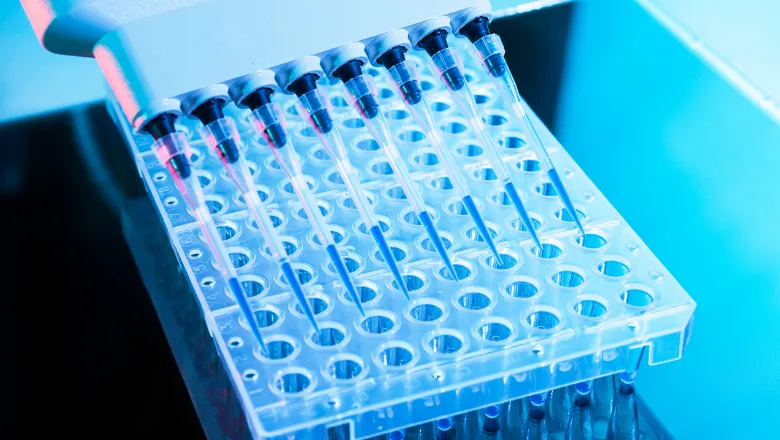The details and scope of these recommendations has been debated since 2015 and their publication marks another important milestone. Moving towards a sequencing-based technology in forensic science has numerous benefits with respect to generating leads in criminal cases, and these recommendations are a crucial step towards implementation of this technology in routine forensic laboratories.”
Dr David Ballard, Senior Lecturer in Forensic Genomics
25 April 2024
King's researcher helps to set standards for new forensic testing technique
Dr David Ballard joined a 20-person committee of international forensics experts to publish new recommendations for short tandem repeat (STR) sequences, providing new guidelines for its use in forensic casework that will benefit fields like criminal investigations and disaster victim identification.

Forensic profiling in DNA has traditionally looked at a restricted, limited part of the genome which is analysed against a database of known DNA samples. In UK forensics, this method is estimated to provide a 60% chance of a match.
In the last ten years, forensics has moved towards using next generation DNA sequencing including a technique that looks at short tandem repeating (STR) sequences.
Consisting of approximately 3% of the human genome, these areas are short DNA sequences that are repeated side-to-side. As STRs are areas that show high variation between different people and are very prone to mutations, they are of great interest to forensic research.
As a new technology, however, there is a lack of standardised protocol or best practice for its use in forensic casework. To address this problem, the International Society for Forensic Genetics (ISFG) established the DNA Commission and tasked it with creating standardised protocols for STRs.
Dr David Ballard, Senior Lecturer in Forensic Genomics at King’s Forensics, was one of 20 members of this committee which included academics, key figures from the forensic sciences and criminal investigation institutes like the FBI to develop new recommendations on STR sequences.
The paper, published in Forensic Science International: Genetics, shares the recommendations submitted to the ISFG’s DNA Committee which looks to recommend a standardised form of best practice for using STRs in forensic work. Among its recommendations, the report defines a minimum length for each STR sequence to ensure consistency in analysis and guidelines on how to name new markers for databases.
Many laboratories and forensic facilities already have the equipment and expertise to conduct STR sequencing analysis but haven’t been able to use it effectively due to a lack of standardised guidelines. The report provides an essential foundation for any institute working with STRs such as laboratories, criminal investigation institutes and biotechnology companies manufacturing forensic equipment.
Being able to utilise STR sequencing will add another testing method to the arsenal of forensic analysis, one that can be run simultaneously with other testing methods. It also significantly improves the investigative capability to work with poorer quality samples such as ones where the DNA has been broken up or contaminated with multiple sources of DNA.
The new tool in forensic casework will benefit a range of fields including criminal forensic analysis, identification of disaster victims, and ancestry forensic technology.

